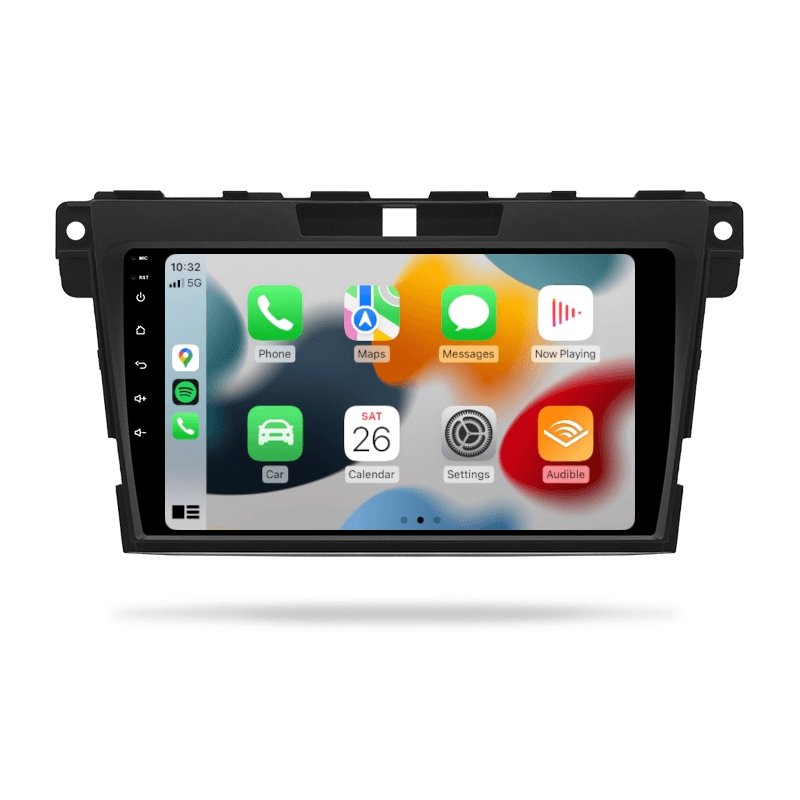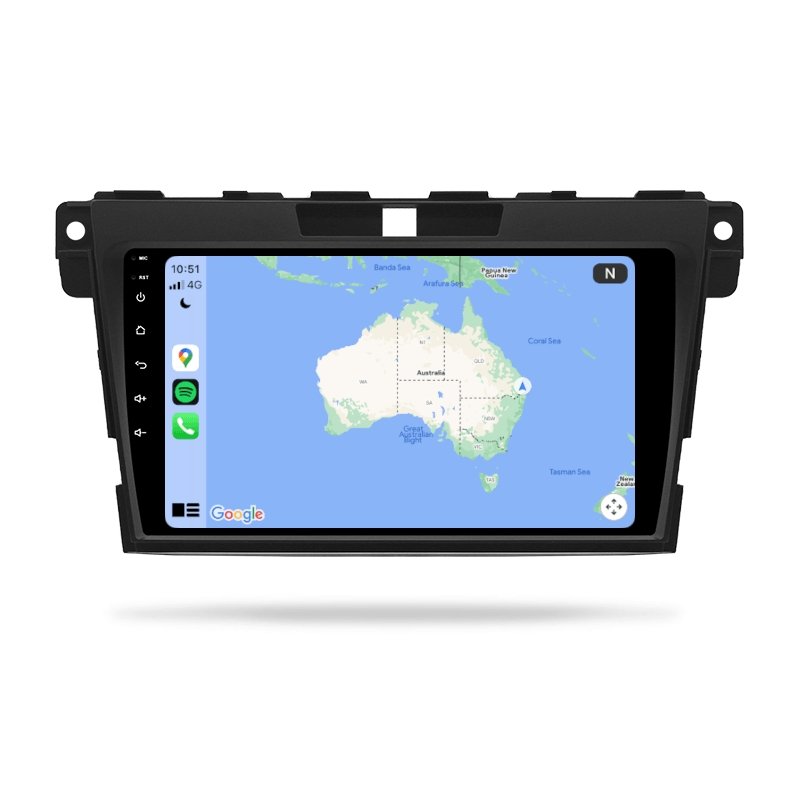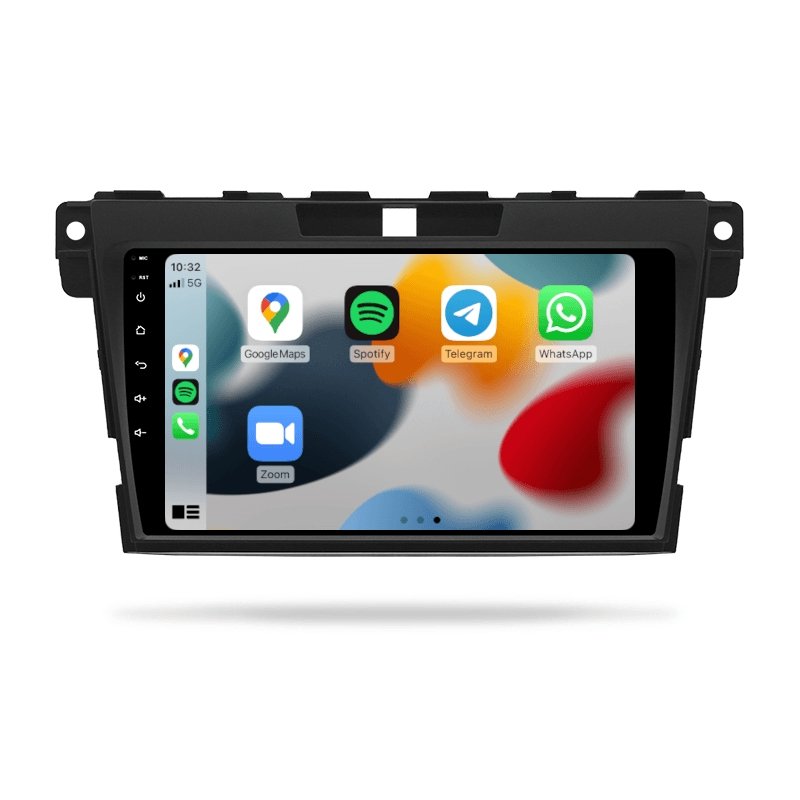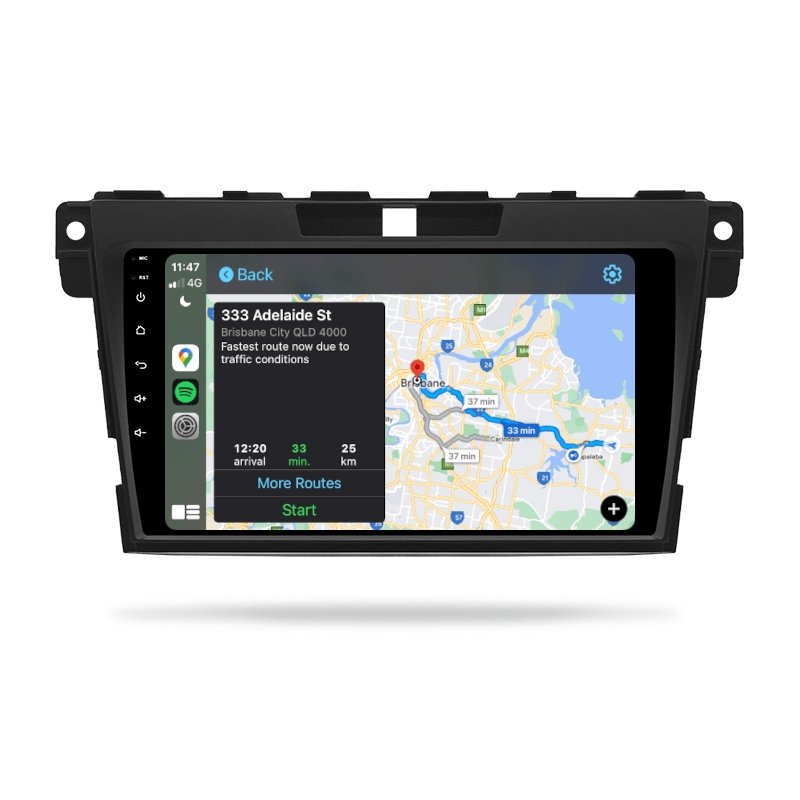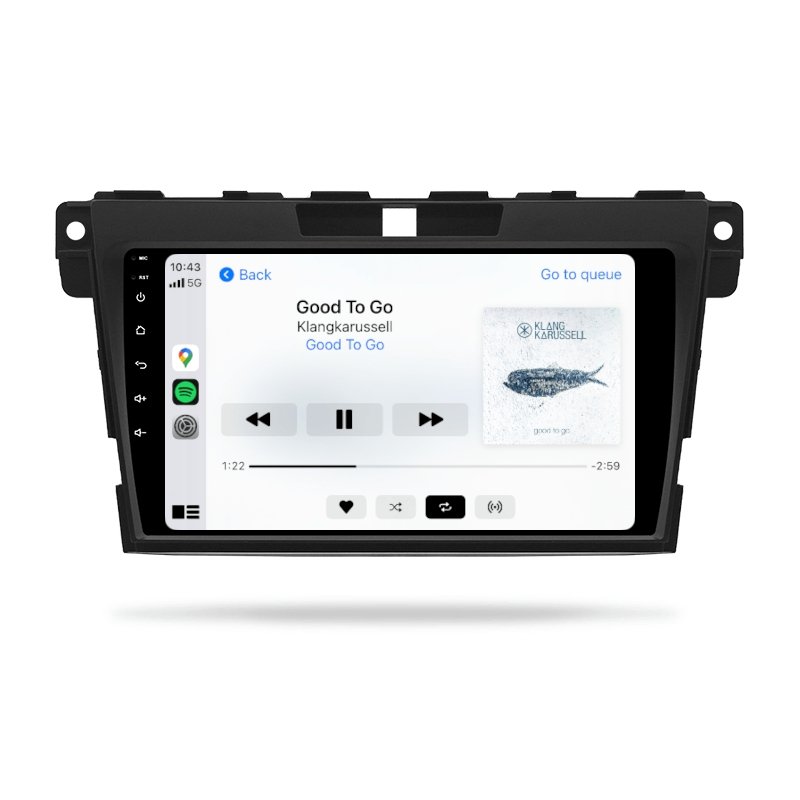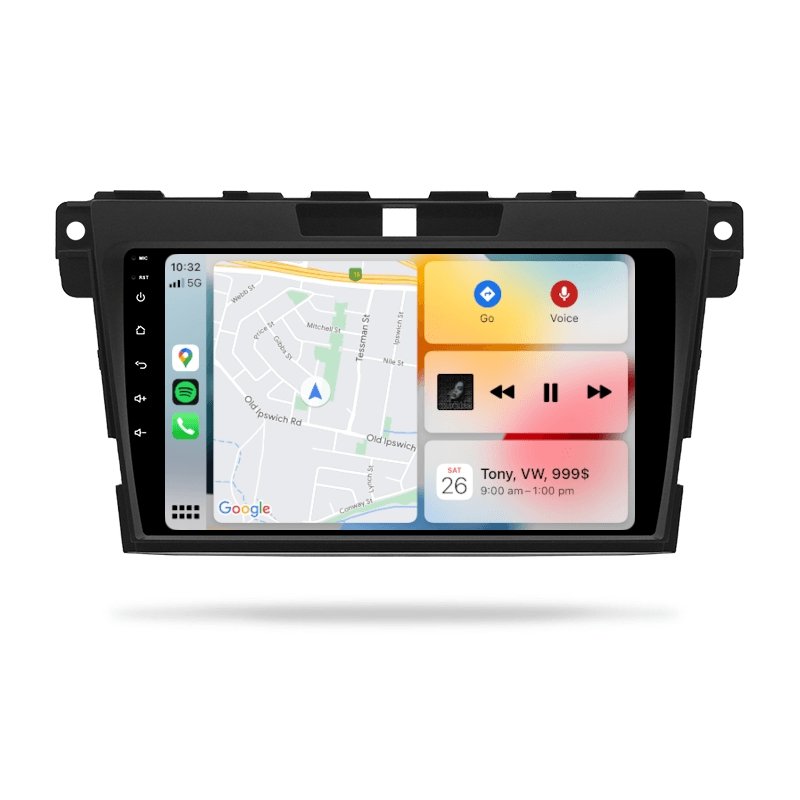Frequently Asked Questions
Everything you need to know about this head unit
Connect the single RCA cable with the yellow plug (included in your package) to extend your Bluetooth signal. This cable doubles as both a camera input AND a Bluetooth/WiFi antenna extension. The two small blue wires attached are antenna boosters that significantly improve connection stability. This simple connection takes 30 seconds and resolves 90% of Bluetooth issues. Make sure it's firmly connected even if you're not using a rear camera.
Try these proven solutions:
1. Quick Fix: Settings → Apps → Z-Link → Disable → Enable → Open (repeat each use)
2. Check Cables: Use the data/charge USB cable (not charge-only)
3. Bluetooth Setting: Disconnect all other Bluetooth connections - CarPlay needs exclusive access
4. Factory Reset Z-Link: Find the pink 'RESET' app, restart, reconnect Bluetooth, then try Z-Link
5. Sound Issues: Switch audio source to 'AUX' or 'USB/AUX' in your vehicle menu
Most issues are resolved with step 1 or 3!
The processor differs between models: The 2/32GB has a 4-Core processor, while 4/64GB and 8/128GB models feature the powerful 8-Core Cortex-A55 processor. Combined with RAM differences: The 2/32GB model with its 4-Core processor and limited RAM may experience slowdowns with heavy multitasking. The 4/64GB with 8-Core provides smooth performance for most users - no lag, seamless app switching, and enough storage for maps and music. The 8/128GB with 8-Core offers maximum performance with its generous RAM allowing unlimited multitasking and massive storage for extensive media libraries. Think of RAM like your desk space - more RAM means you can have more apps open simultaneously without slowing down.
Absolutely normal! These head units are complete replacement systems with their own GPS antenna, microphone, and Bluetooth module. Your factory connectors for these features won't be needed anymore. The important connections are: main power harness, speaker outputs, and the yellow RCA cable (even if not using a camera - it extends Bluetooth range). Any leftover factory plugs can be safely tucked away. If you're unsure about any connection, our support team is here 7 days a week.
Z-Link updates are handled through system firmware updates. Go to Settings → System → System Update. If an update is available, download it to a USB drive (FAT32 format) and install. Important: Never download Z-Link APKs from unofficial sources - they won't work and may cause issues. If you're having compatibility issues with newer iOS versions, the disable/enable workaround (Settings → Apps → Z-Link) usually resolves them while waiting for official updates.
Consider your usage:
• 2/32GB (4-Core): Budget option - fine for basic use, but may lag with multiple apps due to 4-Core processor and limited RAM
• 4/64GB (8-Core): Sweet spot - smooth Android Auto/CarPlay, multitasking, and ample storage
• 8/128GB (8-Core): Premium choice - unlimited multitasking, massive storage, future-proof for years
Most customers choose 4/64GB for the perfect balance of performance and value. The extra RAM makes a huge difference in daily smoothness!
The yellow RCA cable's blue antenna wires also boost WiFi signal! Make sure this cable is connected. Additionally, try these tips: Position the blue antenna wires away from metal surfaces, check that your phone's hotspot is set to 2.4GHz (not 5GHz) for better range, and ensure the head unit's WiFi sleep policy is set to 'Never' in Settings → WiFi → Advanced. For best performance with wireless CarPlay, keep your phone within 1-2 meters of the head unit.
Go to Settings → Sound → Equalizer and adjust to your preference. For more volume, increase the 'Loudness' setting. The 4/64GB and 8/128GB models have superior audio chips that provide cleaner, louder sound. If you have an amplifier, use the RCA outputs for best quality. Also check Settings → Factory Settings (password usually 126) → Audio settings for additional gain controls. Remember: higher-spec models (4GB+) include premium audio components for noticeably better sound.
Yes! Most vehicles work instantly. If not, use the steering wheel learning app: tap the steering wheel icon, press each button on your wheel, and assign functions. For newer vehicles with CANbus, we provide CANbus modules for automatic setup. Some vehicles may need the Key1/Key2 wires connected (usually included in our harness). If you're having trouble, let us know your exact vehicle model and we'll provide specific instructions.
We offer a 30-day return policy. If it doesn't fit or there's a compatibility issue, we'll work with you to resolve it. If you change your mind, a 20% restocking fee applies. Our team verifies compatibility before shipping to minimize issues. We provide installation support 7 days a week to help resolve any problems. With our 3-year warranty and Australian-based support, you can purchase with confidence. Full details in our Refund Policy.
Historical Context and Evolution of the Mazda CX-7:
Debuting internationally in 2006 as a 2007 model-year vehicle, the Mazda CX-7 was introduced as a departure from the traditional, more utilitarian SUV concepts prevalent at the time. The CX-7 was Mazda's strategic response, positioning itself between Mazda’s smaller passenger vehicles and larger full-size SUV options, carefully crafted to respond to market demands for more agile and engaging vehicles in the midsize segment.
ER Series 1 (2006–2009):
The first series of the CX-7 offered groundbreaking styling, clearly inspired by the sleek and muscular aesthetics of the Mazda RX-8 sports coupe, resonating immediately with global buyers seeking modern driving attributes. The distinctive design combined a bold stance, sharply sculpted lines, and a dramatically steeply inclined windshield. Power was supplied primarily through a turbocharged 2.3-litre inline-four petrol engine, a powertrain borrowed and adapted from Mazda's performance-oriented lineup, notably shared with the Mazda6 MPS and Mazda3 MPS models. With roughly 244 horsepower, it delivered spirited acceleration and nimble handling rarely seen in midsize crossover vehicles of that era, markedly differentiating it from competitors.
In Australia, Europe, and Japan, additional powertrain diversity was introduced later through naturally aspirated engines and diesel options (particularly in European markets), broadening its market appeal. Although the U.S. market predominantly featured the powerful turbo petrol variant, international markets enjoyed a selection of lower-powered but fuel-efficient versions, injecting versatility into automobile selections suited to distinctive regional tastes and demands.
Notably appreciated features included its responsive driving characteristics, agile suspension tuning, stability, and the overall sense of premium quality and comfort within its well-appointed cabin. Mazda succeeded distinctly in positioning the CX-7 as an appealing option for drivers desiring both performance-oriented driving pleasure and practical family usability.
ER Series 2 (Facelift, 2009–2012):
Following its initial success, the CX-7 received significant updates in 2009 for its second iteration, improving refinement and responding to consumer preferences. The facelift brought refreshed front-end styling, subtle but meaningful exterior tweaks, and substantial interior improvements elevating its quality feel. With additional sound-proofing, higher-grade materials, updated instrument cluster, and improved ergonomics, the Series 2 effectively enhanced comfort and reduced cabin noise, generating a more relaxed drive environment.
Notably, Mazda expanded powertrain alternatives, catering again to varying global preferences. Australia and Europe welcomed an efficient 2.2-litre turbo-diesel offering, enhancing fuel economy and torque provisions—popular among drivers tackling long-distance journeys or seeking efficiency increases without sacrificing performance. North America continued predominantly with petrol engines, with adjustments implemented for smoother power delivery, quicker throttle response, and improved reliability.
The Mazda CX-7 disappeared from Mazda's lineup after 2012, succeeded indirectly by the more fuel-efficient, versatile, and family-oriented CX-5—marking Mazda’s deliberate move towards a broader mainstream appeal. Even so, the CX-7 left a memorable legacy, revered for agile handling, spirited acceleration, and unique styling aesthetics. This crossover notably served drivers worldwide, promising a blend of sporty enthusiasm within everyday commuter practicality.
Bringing Modern Technology into the Mazda CX-7 via Infotainment Solutions:
Today, although original specifications offer limited connectivity by current standards, modern technology is seamlessly accessible through thoughtfully designed aftermarket infotainment units. Brummstadt offers exemplary tailored aftermarket head units, specifically designed for integration into Mazda's dashboard layouts, naturally matching the CX-7's original cabin aesthetics and complementing ergonomic standards.
Such advanced aftermarket head units provide significant modern infotainment advantages. Full support for both wired and wireless Apple CarPlay and Android Auto allows straightforward access to mobile navigation apps, including Apple Maps, Google Maps, and WAZE, transforming navigation tasks from cumbersome procedures into intuitive operations. Consider a scenario: an evening spent at dinner with family, then spontaneously driving to a friend's home. Simply setting the navigation route on a smartphone—effortlessly synchronized with the infotainment screen through either Apple CarPlay or Android Auto—ensures relaxed, informed, and stress-free travels, even through unfamiliar cityscapes.
In addition to navigation practicality, a heightened safety benefit impacts driving experience through optional inclusion of high-definition (1080p) recording-capable cameras, available both for forward and rear orientations. Their implementation significantly aids in visibility, vehicle maneuverability, and offers concrete situational evidence in traffic situations.
Brummstadt's infotainment upgrade also offers entertainment-oriented enhancements, facilitating the direct attachment and employment of USB-driven gaming controllers. Passengers can engage in friendly multiplayer gaming experiences right on the infotainment screen during long journeys—turning tedious trips into memorable family experiences.
Integrated smart assistant functionalities in these advanced head units amplify convenience further. Employing familiar smartphone assistants—such as Google Assistant or Apple’s Siri—drivers can manage navigation prompts, media selections, and vehicle-supported personal communications securely and comfortably through simple voice commands. Furthermore, this feature expands intuitively, providing connectivity with home automation equipment, as exemplified by effortlessly issuing commands like, "Hey Siri, turn on the driveway lights." Thus, vehicles equipped with advanced aftermarket infotainment installations represent practical extensions of modern connected lifestyles, becoming not just modes of transport but integrated elements within broader, technologically enhanced routines.
Overall, the Mazda CX-7 remains recognized as an exceptional crossover choice, blending energetic performance attributes, refined styling, versatile practicality, and unique positioning within its segment. Carefully curated and thoughtfully installed technology solutions like those offered by Brummstadt invigorate vehicle ownership meaningfully, creating richer engagements for drivers and passengers. Infotainment installations represent thoughtful upgrades that echo Mazda's original vision—embodying driving joy and fulfilling experiences, every trip transformed into memorable, comfortable encounters.



